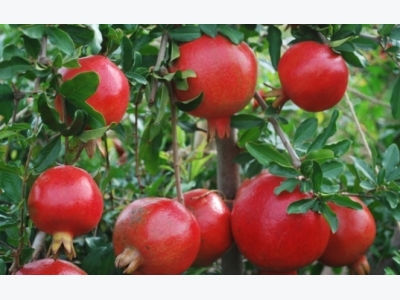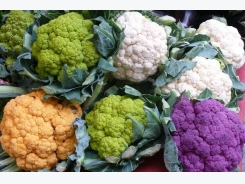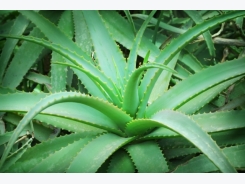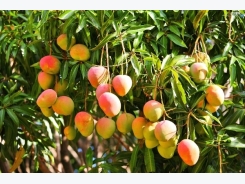Pomegranate Cultivation Information Guide

Introduction of Pomegranate Cultivation:- Pomegranate is a table fruit that is grown in tropical and sub-tropical regions of the globe. Pomegranate fruit is one of the most popular, nutritionally rich fruit with unique flavour, taste and medicinal properties. The pomegranate tree is also grown as an ornamental plant which produces very attractive red flowers. Commercial cultivation of Pomegranate is very much successful in most of the Asian countries. This plant is hardy in nature and has very low maintenance cost with high yielding potential and has versatile adaptability. Pomegranate belongs to the family of “Lythraceae” and genus of “Punica”. Pomegranate is originated from Iran and spread across the world. Currently pomegranate is widely cultivated throughout the Middle East and Caucasus region, North Africa and tropical Africa, the Indian subcontinent, Central Asia. Pomegranate can be easily grown in pots, containers and back yards.

Pomegranate Flowering
Health Benefits of Pomegranate:- The following are some of the health benefits of pomegranate.

Health Benefits of Pomegranate
- Pomegranate is a good source of minerals and vitamins.
- Pomegranate boosts immune power.
- Pomegranate controls diabetes (blood sugar levels).
- Pomegranate maintains blood pressure.
- Pomegranate helps in treating diarrhoea.
- Pomegranate helps with digestion.
- Pomegranate prevents anaemia.
- Pomegranate improves heart health.
- Pomegranate is beneficial during prenatal care.
- Pomegranate reduces risk of cancer.
- Pomegranate is an excellent anti-ageing agent.
- Pomegranate helps in healing scars.
- Pomegranate Prevents skin cancer.
- Pomegranate is good for skin health.
- Pomegranate is good for hair health.
Varieties of Pomegranate:- Several new varieties have been developed and new orchards have come with well-known improved varieties in many countries. As there are many improved varieties available for each region. It is better to find out hybrid cultivar which results in high yielding. While selecting pomegranate seedlings from reputed nursery, make sure to get high quality, commercial high yielding and disease tolerant plants.
Names of Pomegranate:- Sipak (Bosnian),Shege (Albanian),Pomagranait (Irish), Granada (Spanish), Anaar (Nepali),석류 열매 (Korean), رمان) Arabic), Nar (Bulgarian), Granada ( Filipino), Melagrana (Italian), Granateple (Norwegian), ทบั ทมิ (Thai), Cây lựu (Vietnamese), Zakuro (Japanese), Grenade (French), 石榴 (Chinese), Totum (Cambodian), Nar (Turkish), Deluma (Sinhalese, Sri lanka), انار ,Anar (Persian), 石榴 (Taiwanese),Grenadine (German).
Local Names of Pomegranate in India:- Anaar (Hindi), Maadhala naarnga (Malayalam), மாاللهைள (Tamil), Dalimb (Konkani), Daanimma (Telugu), Dadam (Gujarati), ਅਨਾਰ, Anar ( Punjabi), Dalimbo (Oriya), Dalim (Assamese), Dalimba (Kannada),Dalimb (Marathi),Dalim (Bengali),Dan (Kashmiri), انار) Urdu), Kamfoi (Manipuri).
Climate Requirements for Pomegranate Cultivation:– Pomegranate crop prefers dry climate grows up to an elevation of 1800 meter and especially during fruit development stage, prolonged hot and dry climate is mandatory for better growth and yield. The Optimum temperature for fruit development is 36°C to 38°C.Pomegranate fruits are easily damaged in humid climatic conditions by pomegranate butterfly and will not develop sweetness in the fruit.
Soil Requirements for Pomegranate Cultivation:- Pomegranate can be cultivated in wide range of soils. However, well-drained, deep loamy soils rich in organic matter are best for its cultivation. This crop can tolerate even alkalinity and salinity to certain extent but a pH range of 5.5 to 7.0 is best. The only soil that will not support pomegranates is heavy clay, because soils with excessive clay tend to present drainage problems. The main problem of this crop is it is very sensitive to soil moisture fluctuations causing fruit cracking.

Growing Pomegranate in Pots
Propagation Pomegranate Cultivation:- In pomegranate cultivation, vegetative propagation is recommended in establishing successful pomegranate orchard. Propagation by cuttings is common and cuttings should be taken from suckers which spring from the base of the main stem and should be mature about 20 cm to 30 cm in length and 6 mm to 12 mm thickness. Monsoon season (Rainy season is the best period to achieve maximum success in establishing a pomegranate plantation).
Land Preparation, Planting in Pomegranate Cultivation:- Land should be prepared by giving 2 or 3 ploughings and providing proper channels. Remove any weeds from previous crops. Generally, planting distance depends on soil type and climatic conditions. Old orchards were planted at 3 meter to 6 meter space where as new dwarf varieties are recommended to plat at a spacing of 4 meter x 4 meter which accommodates about 625 plants per 1 hectare land. Rooted cuttings or layers of 12 to 18 months old can be planted during June to December in pits of 60 cm x 60 cm x 60 cm.

Pomegranate Farming
Irrigation in Pomegranate Cultivation:- Drainage is one of the most important factors to consider in growing pomegranate crop as these plants are very sensitive to water logged conditions. Irrigation should be given depending on soil, climate and availability of water. Drip irrigation can be adopted for better utilization of water. Pomegranate crop does not require any irrigation in rainy season. However, in very dry and hot weather conditions, irrigation should be given once in 4 days.
Intercultural Operations in Pomegranate Cultivation:-
- Training and Pruning: Multi stem training is more prevalent and useful also because due to some reason even if the plant losses one stem it contains others to survive. Pomegranate fruits are borne terminally on short spurs arising from mature shoots. These bear fruits for 3 to 4 years. Only limited pruning of trees should be required. The gradual growth of new shoots should be encouraged by restricted cutting back of bearing shoots. Suckers should be removed on regular basis. The pomegranate plants should be trained to get a single stem up to 60 cm with 3 or 4 scaffold branches and thinning of flower clusters ensures better sizes of the fruits.
- Weed control: Mulch would be useful to prevent the moisture lose and control the weed growth.
- Intercropping: Growing pulses (grains) and green manure crops are recommended during first 3 to 4 years of plantation. If there is inter cultivation, make sure to provide additional fertilizers and manures.
Manures and Fertilizers in Pomegranate Cultivation:- For higher yields, applying right amount of manures and fertilizers is critical during the orchard establishment. In Pomegranate plantation the following manures and fertilizers are recommended during its growth period.
| Manures and Fertilizers | First year | Second to 5th year | From 6th year onwards |
| Farmyard manure (FMY) | 10 kg/plant | 20 kg/plant | 30 kg/plant |
| N | 200 grams/plant | 400 grams/plant | 600 grams/plant |
| P | 100 grams/plant | 250 grams/plant | 500 grams/plant |
| K | 400 grams/plant | 800 grams/plant | 1200 grams/plant |
Pests and Diseases in Pomegranate Cultivation:- The common pests found in pomegranate plantation are bark eating caterpillar and pomegranate butterfly. The pomegranate fruits are susceptible to fruit fly and these needs to be controlled from flowering to button stage. Spraying endosuplhan 0.05 % at 10 days interval alternatively will control this.
The common diseases found in pomegranate plantation are fruit spot & fruit rot and these need proper and regular spraying.
The other serious physiological disorder in pomegranate orchard is ‘fruit cracking’. In young fruits it could be due to boron deficiency but fully grown fruits crack due to moisture imbalances. Prolonged drought causes hardening of peel and if this is followed by heavy irrigation or down pour then the pulp grows and the peel cracks. The following are the control measures for this fruit cracking.
- Maintain soil moisture and not allowing wide variations in soil moisture depletion.
- Select tolerant varieties (cultivars).
- Early harvesting should be carried not allowing the fruits to crack.
- Spraying of calcium hydroxide on leaves and on fruit set is recommended.
Harvesting In Pomegranate Cultivation:- Usually, pomegranate flowers take 5 to 7 months to be ready as mature fruits. These fruits should be harvested at mature stage which can be judged by change in skin colour to slightly yellow and metallic sound when tapped.

Ready to Harvest Pomegranate
Yield in Pomegranate Cultivation:- Yield of the crop depends on the cultivar (variety) and other factors like irrigation, soil , climate and orchard management practices. However, in pomegranate cultivation one can obtain an average yield of 20-25 tons/ha/year.
Related news
Tools

Phối trộn thức ăn chăn nuôi

Pha dung dịch thủy canh

Định mức cho tôm ăn

Phối trộn phân bón NPK

Xác định tỷ lệ tôm sống

Chuyển đổi đơn vị phân bón

Xác định công suất sục khí

Chuyển đổi đơn vị tôm

Tính diện tích nhà kính

Tính thể tích ao



 Grape Cultivation Information Guide
Grape Cultivation Information Guide  Mango Farming Information Guide
Mango Farming Information Guide